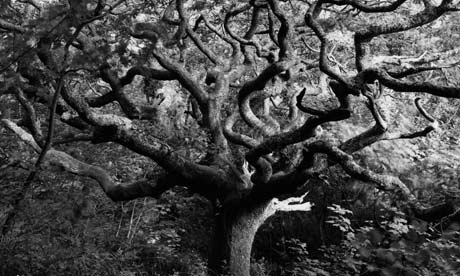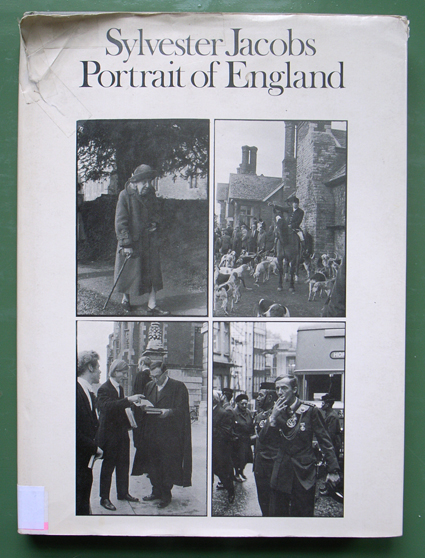
I spent this evening rooting through various photography books in the Fatamorgana library again and came across an intriguiging book called Portrait of England (M Joseph, 1976) by the black American photographer Sylvester Jacobs.
Jacobs was born in Olkahoma in 1944 and moved to London in the late 1960s where he began working for the Radio Times and Daily Telegraph Magazine. In 1973, the Victoria and Albert museum mounted a travelling exhibition entitled ‘Three Photographers’, one of whom was Jacobs.
In his foreword to the book, Jacobs writes: “I have tried in my own way to photograph and understand those qualities that are both human and personal without making any attempt to be exhausitve or laying stress on the social or the political.” He is concerned with what he describes as “the phenomena of the personality”, the understanding of England, private and public, through the features of faces.
The 270 black and white photographs in the book are split in a series of chapters, which include – Lord Mayor’s Show, Penhurst Fete, On the train, Eton, The hunt, Chipping Norton School, Stow Fair, Markets and the Motor Show.
Reviewing the book Marina Vaizey from the Sunday Times wrote “As a visual essay on aspects of English life it is full of character and free from whimsy. Neither quaint nor too cosy, it’s both gritty and gentle, and appealingly affectionate.”
One of the only references I can find about Jacobs or his work on the internet is in an essay by Peter Marshall where he writes about the work of Tony Ray-Jones from 2005:
“Ray-Jones was also noted for his stinginess, (the kind of guy who would never pay for anything if it could be avoided and insisted on restaurant bills being scrupulously divided up so he only paid for what he had eaten). But to other photographers he could be extremely generous with his time and advice, giving long and detailed criticisms and other help. One who benefited from this was Sylvester Jacobs, a young black American photographer who was working on a similar project to his (though very differently) published in 1976 as ‘Portrait of England’.”
There appears to be a portait of Jacobs on this blog, along with a number of his old students who are trying to track him down.
Posted in OTHER STUDIES | 3 Comments »
This week I’m teaching a summer workshop at Fatamorgana (The Danish School of Art Photography) and have just come across a copy of Ian Berry’s The English (Penguin Books, 1978) in the school’s library. This small paperback book contains one hundred wonderfully insightful portraits from around the country taken by Berry in the mid 1970s. The work was funded by the first Arts Council Photography Bursary.
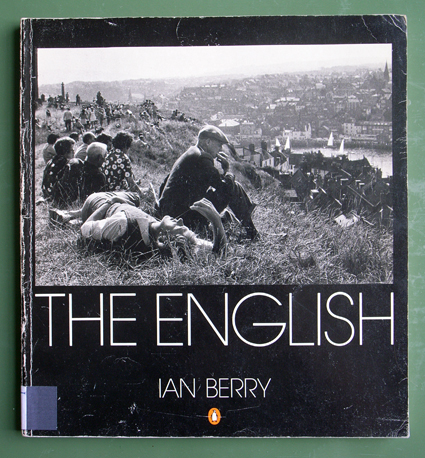
Berry was born in Preston, Lancashire and internationally known as a Magnum Photographer. He made his reputation in South Africa, where he worked for the Daily Mail and later for Drum magazine. He was the only photographer to document the massacre at Sharpeville in 1960, and his photographs were used in the trial to prove the victims’ innocence.
Most of the photographs in ‘The English’ were taken during 1975, although he photographed for two and a half years in total. Predominantly turning his camera on the people, rather than the landscapes, he photographed old and young of all classes; at home, at work, at leisure and the result is a sensitive portrayal of the nation or as Berry says “a personal exploration of English life.”
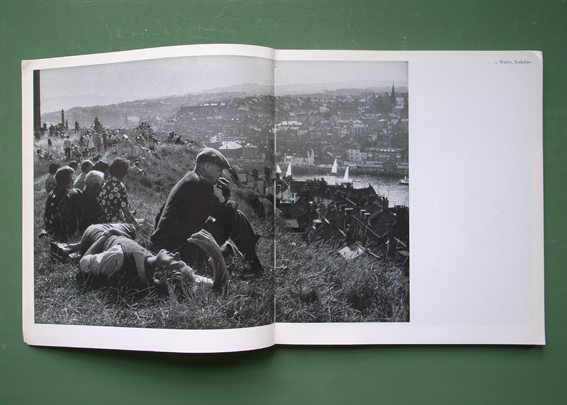
Whitby, Yorkshire
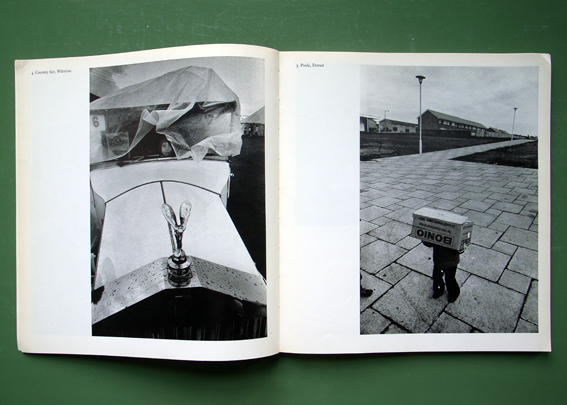
Country fair, Wiltshire (left) & Poole, Dorset (right)
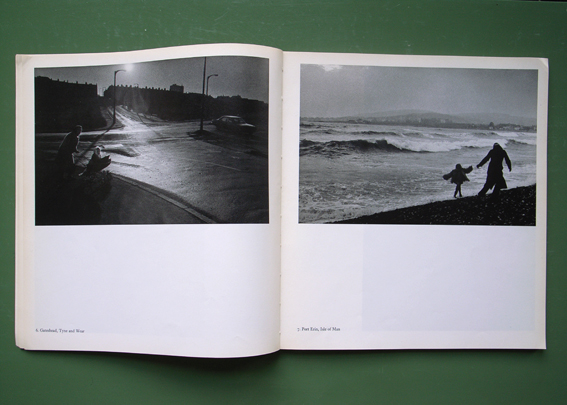
Gateshead, Tyne and Wear (left) & Port Erin, Isle of Man (right)
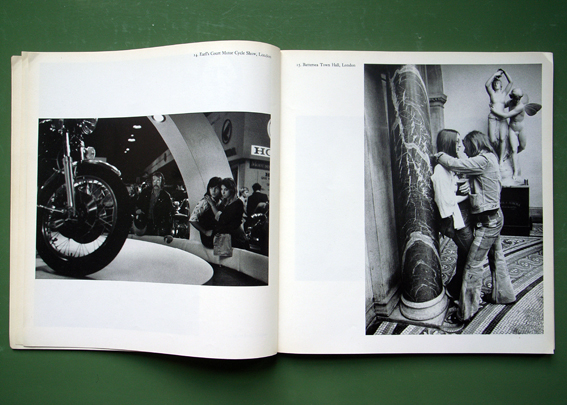
Earl’s Court Motor Cycle Show, London (left) & Battersea Town Hall, London (right)
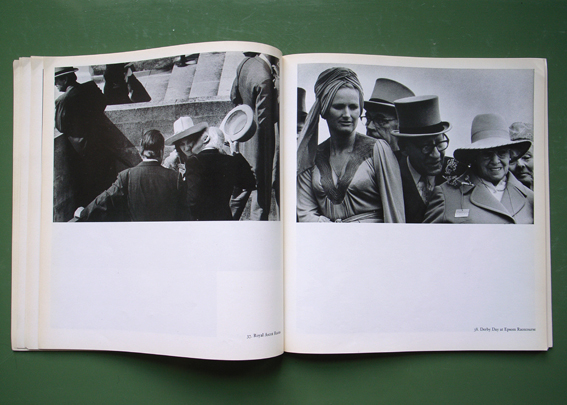
Royal Ascot Races (left) & Derby Day at Epsom Racecourse (right)
In his foreword to the book, Berry writes “thought I was born and grew up in the North of England, I was in the odd situation of being English and knowing very little about England, having spent much of my life abroad.” After a year documenting he concludes “England has changed less in the 15 years away than I thought – or at any rate what I photographed had changed less than I had expected. Also, England is the easiest country in the world in which to take photographs – in the way people react or rather do not react in the photographers’ presence.”
Most of the photographs were taken on Leica cameras with 28mm, 35mm and 50mm lenses on Ilford film (HP4 an HP5).
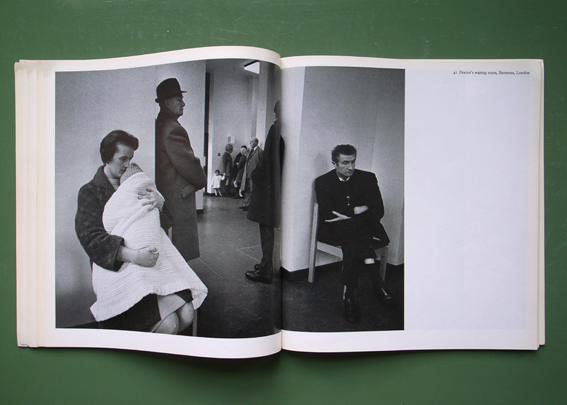
Doctor’s waiting room, Battersea, London
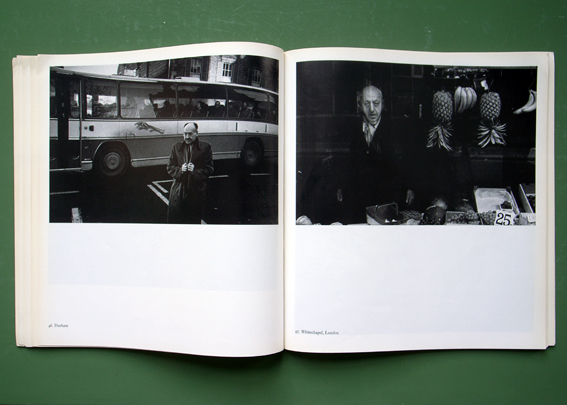
Durham (left) & Whitechapel, London (right)
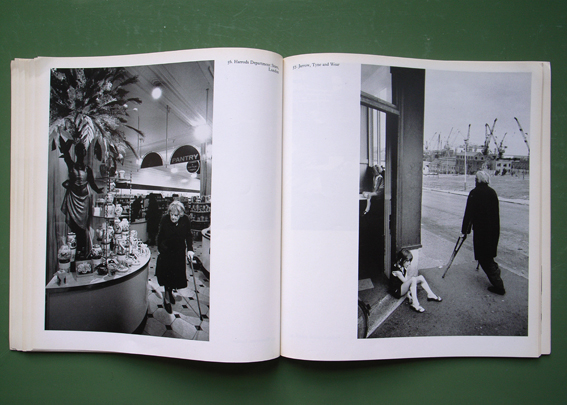
Harrods Department Store, London (left) & Jarrow, Tyne and Wear (right)
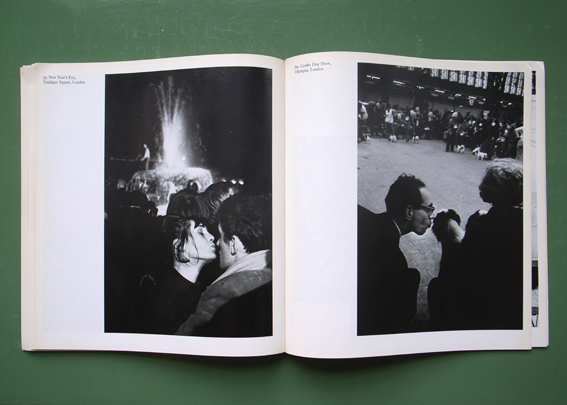
New Year’s Eve, Trafalgar Square, London (left) &Â Crufts Dog Show, London (right)
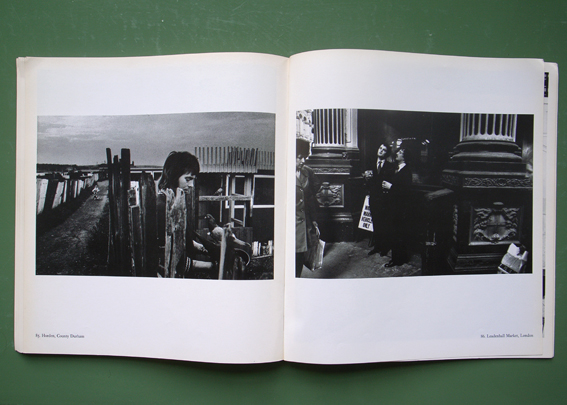
Horden, County Durham (left) & Leadenhall Market, London (right)
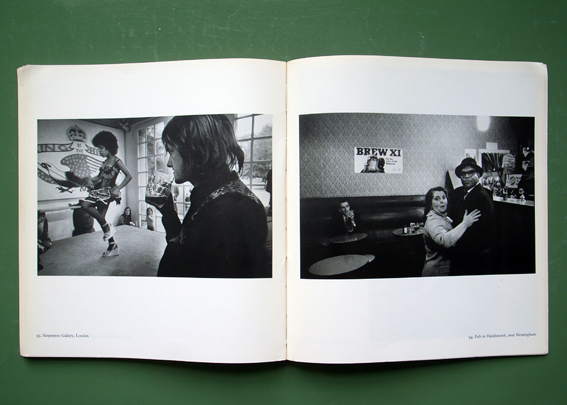
Serpentine Gallery, London (left) & Pub in Hansworth, near Birmingham (right)
There’s currently one used copy of the book listed on Amazon for £70.00.
In a recent interview with the Guardian, Berry commented that his dream project would be to update his book on the English. I hope he gets the chance.
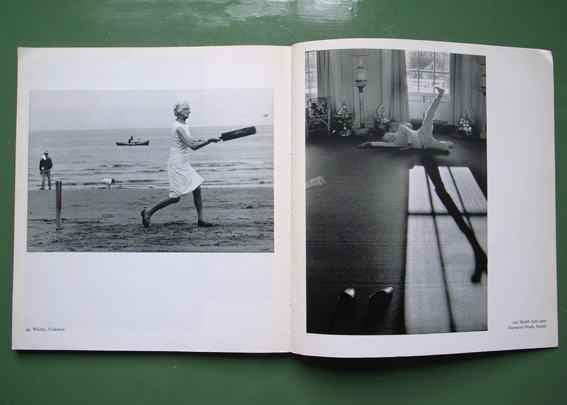
Whitby, Yorkshire (left) & Health farm near Haywards Heath, Sussex (right)
Posted in OTHER STUDIES | 3 Comments »
James Ravilious, whose work I discussed earlier on the blog here, has an exhibition of work currently on display at the National Theatre in London to marks the tenth anniversary of his death.
Oak Tree, marland, Devon, 1997. © James Ravilious/Corbis
“Best known for his seventeen-year study of rural life in North Devon (The Beaford Archive), James Ravilious (1939-1999) recorded everyday living both in Devon, and elsewhere. The photographs taken portray in detail the rich landscape and weather along with the people, their hardships and their entertainments. This exhibition celebrates his work and displays his beautiful, honest and warmly sympathetic black and white images of life in the country.”
The exhibition runs until 13th September in the Olivier Exhibition Space.
You can read a review of the exhibition on Guardian Unlimited, here.
Posted in OTHER STUDIES | Comments Off on AN ENGLISH EYE
I met up with Dewi Lewis at Rhubarb Rhubarb over the weekend and was thrilled to hear he will be publishing Andrew Buurman’s work Allotments this fall.
Here’s the publicity blurb- “There’s something about the word ‘allotments’ that conjures up an image of traditional values, of balmy summer days spent working the land, escaping in honest toil. A rural idylll far removed from our everyday experience. And even though allotments can be found throughout the world, in our minds they still seem to encapsulate a certain Britishness. Andrew Buurman’s photographs capture the essence of the allotment and convey the enthusiasm and diversity of today’s plot holders.”
The history of allotments tracks the major social and political changes in British life: the move away from open field agriculture, the urbanisation of the Industrial Revolution, the need for home grown produce during both World Wars. By 1943 there were some 1.4 million allotments in the UK growing 10 percent of the nation’s food. Inevitably both increasing affluence and the redevelopment of many sites led to a dramatic decrease in numbers, though in recent years there has been a resurgence of interest. There are now some 300,000 allotments in the UK often shared between families and friends. I came across countless on my England sojourn and a photograph taken at the Whitehouse Allotments in Middlesbrough is featured in We English.
Buurman’s photographs were all taken on Uplands Allotments, in Handsworth, in the heart of Birmingham. The largest allotment site in the UK – with 422 plots – it opened in 1949, with its own office and meeting hall. Even today it retains much of the communal spirit of the post war era with weekly tea dances, bingo nights and an annual flower and vegetable show.
Here are a few….
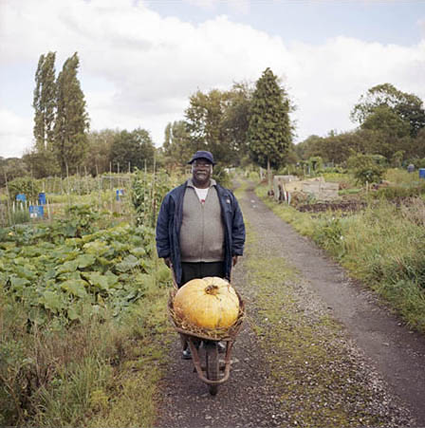



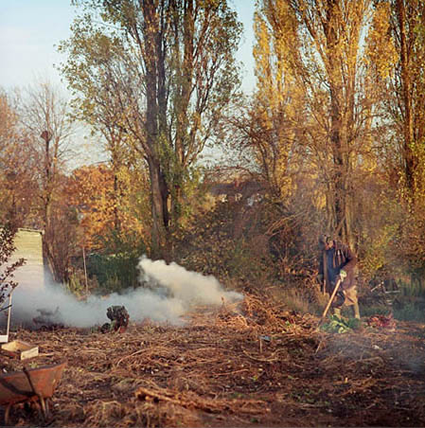

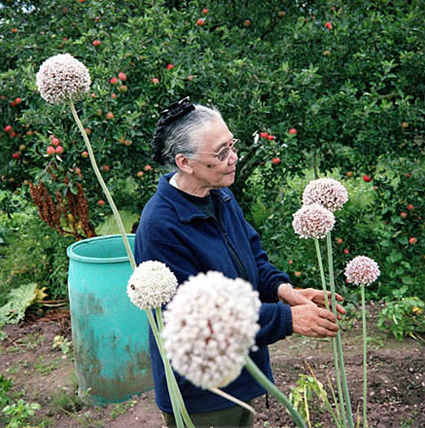


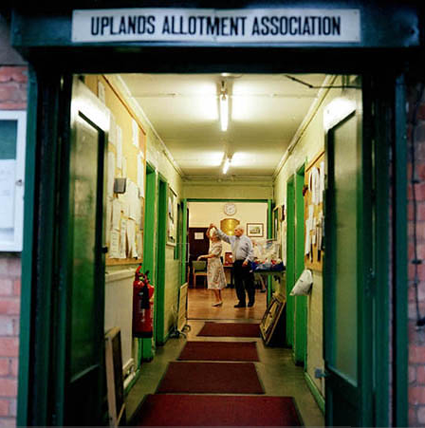
All photographs © Andrew Buurman.
You can see more work from Allotments and other projects by Buurman on his website.
Allotments will be published by Dewi Lewis in October 2009.
Posted in OTHER STUDIES | 2 Comments »
“I love processions – as humans, it’s almost part of our DNA to be instinctively attracted to big public events that bring us together. A good procession is in itself a public artwork: part self-portrait and part alternative reality.”
Jeremy Deller
Jeremy Deller is in the news a lot lately promoting his new body of work, Procession, which will take place at the Manchester International Festival on July 5th. With participants drawn from across Greater Manchester, Procession represents what Deller describes as ‘northern social surrealism’, combining social clubs, special interest groups, popular music and invited individuals with traditional processional stalwarts such as Rose Queens and brass bands.
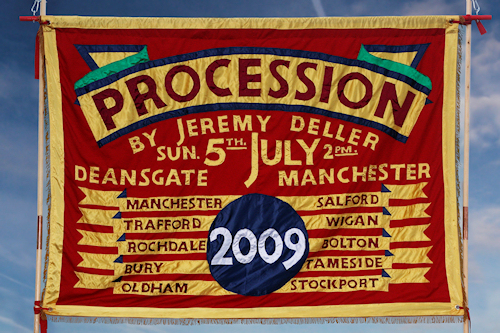
Given his current profile I thought it was about time I did post about this artist and his work.
Deller, was born in London in 1966 and studied art history at the Courtauld Institute of Art. Collaboration and participation are central to Deller’s work. As he explains, “A good collaboration is like going on a long journey without a map, never knowing quite where you will end up.” He acts as curator, producer or director of a broad range of projects, including orchestrated events, films and publications, which draw attention to forms of culture on the fringes of the mainstream or reveal hidden histories. He currently lives and works in London.
He is perhaps best-known for The Battle of Orgreave, ‘a piece of living history’ which was a commissioned by Artangel in 2001. This work brought together veteran miners and members of historical re-enactment societies who restaged the controversial clash between miners and the police during 1984-5. This collaboration resulted in a film, a book and an audio recording, which all ‘function to resurrect the raw emotions from the period and provide a fresh account of events that have been distorted by the media.’
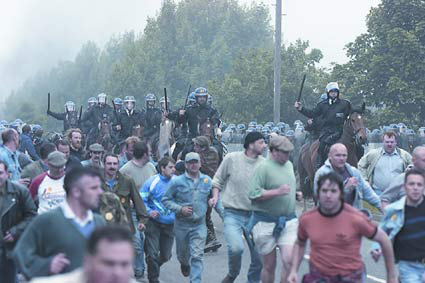
Still from The Battle of Orgreave, Commissioned and produced by Artangel © Jeremy Deller, 2001
Deller won the prestigious Turner prize in 2004, shortlisted for his installation Memory Bucket at ArtPace, San Antonio. The film uses documentary techniques to explore the state of Texas, focusing on two politically charged locations: the site of the Branch Davidian siege in Waco and President Bush’s home town of Crawford. Archive news footage is collaged with interviews, juxtaposing official reports with personal narratives. (You can find details of Deller’s prize winning entry on Tate Britain’s website here).
The project was filmed months after the US and UK invasion of Iraq and documents Deller’s travels in Texas which he talks to a variety of individuals, from staff in George Bush’s local diner in Crawford, to Quaker anti-war protesters. Deller has said “making that film made me realise that it was actually possible to talk to peple almost at random, and ask questions and get responses from them, and that a journey is a very good way to present or make an artwork.”
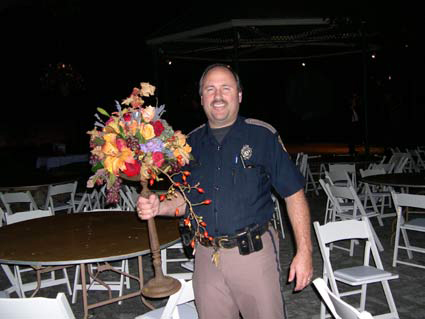
Cop with Flowers, San Antonio, Texas © Jeremy Deller, 2003
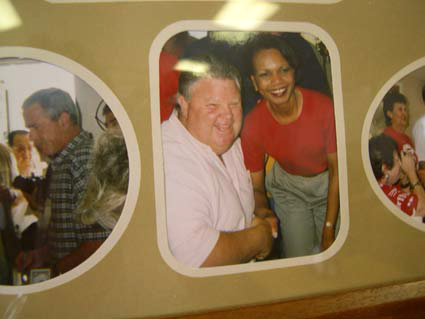
Coffee Station, Crawford, Texas. Still from Memory Bucket © Jeremy Deller, 2003
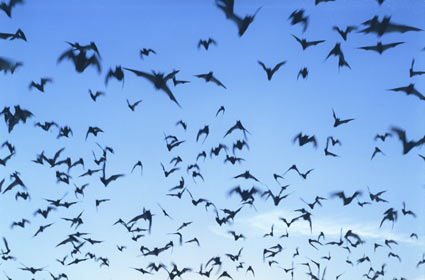
The Bats. Still from Memory Bucket © 2003
Deller has recently completed a new body of work in America, called ‘It is what it is, USA, 2009’. The work stems from a failed application to place the shell of a burnt-out car on the 4th Plinth in Trafalgar Square. The vehicle had been hit by a bomb attack in central Baghdad in which 35 people died. Instead he took the remains of the vehicle on a three-week road trip from New York to Los Angeles in a project co-sponsored by the public art group Creative Time. He was joined by Jonathan Harvey, a US soldier who served in Iraq; an Iraqi artist, Esam Pasha, who worked as a translator for the US army and now lives in the US; a curator from New York; a writer and a road manager. You can read an article by Esam Pasha in this month’s issue of The Art Newspaper here.
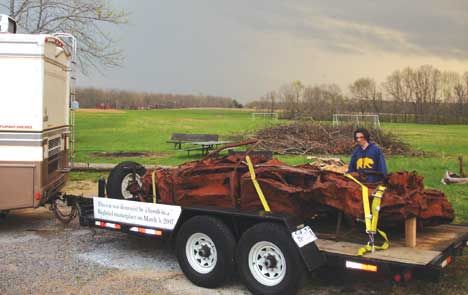
Jeremy Deller on a farm in Summertown, Tennessee for ‘It is what it is, USA, 2009’
Back on home soil, Deller has often explored the cultural and political heritage of Britain and it’s his work ‘Folk Archive’ with fellow artist Alan Kane, that was of most interest to me in connection with We English.
Kane and Deller took seven years to create the Folk Archive, (1998-2005),amassing a huge collection of vernacular artefacts froma cross Britian, from drawings and paintings to costumes and decorations. Among the 250 works are the detritus of political protests, car rallies, crop circles, clowns and office life. There are photos and footage of strange festivals and competitions where life becomes performance art, including the World Gurning Championships, and a festival of insults and horse skulls in South Wales, called Mari Lwyd.
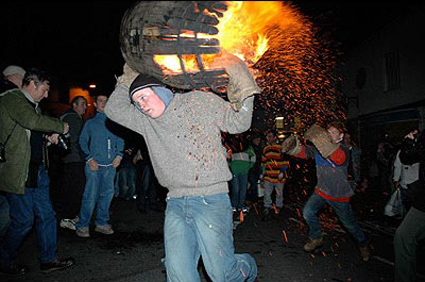
Tar Barrel Rolling, Ottery St. Mary, Devon © 2004
Interviewed by Iain Aitch in The Guardian in 2005, Deller said “We are not looking for the most bizarre stuff ever produced. It is what surprises us, what we are not expecting to see. When you see an item that is a variation on something, maybe taking it further forward or sideways, that is what we like.”
“We were very conscious that stuff only exists in museums by accident,” says Kane. “No one was looking around at the time that stuff was produced. I think there is a slight discrepancy between being interested in folk art and wanting to maintain or propose that anything we selected will be maintained. It is just about shifting your vision slightly.”
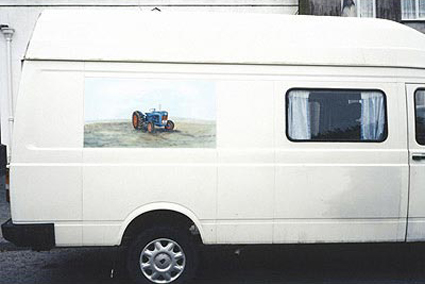
Tractor Painting on Van, Delabole, Cornwall © 2002
The show was conceived out of love for popular art and abhorrence for the meaninglessness of the Millennium Dome. The last retrospective of British folk art took place at the Whitechapel in 1951, so they thought it was about time somebody attacked the subject. Kane and Deller considering the exhibits so unique, priceless or charged by their owners and locations as to be impractical and undesirable to keep together when not on show. (It was first exhibited at The Barbican in 2005).
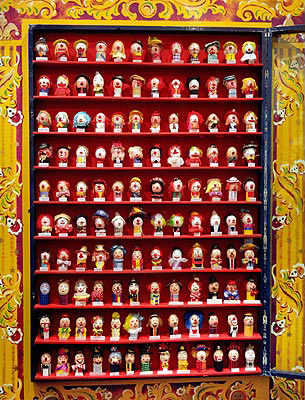
Clown Register, Clowns Gallery, Dalston, London © 2005
The Folk Archive raises absorbing questions about British-ness. How do the strange events and visual ephemera of modern life create an image of a country’s psyche? What are the stories floating behind the glimpses of protest, anger, chaos and fun? Most importantly, how do these objects and images explain the motivation behind creativity? In fact, what makes this collection of photographs, videos and weird stuff so interesting is wondering why they exist at all.
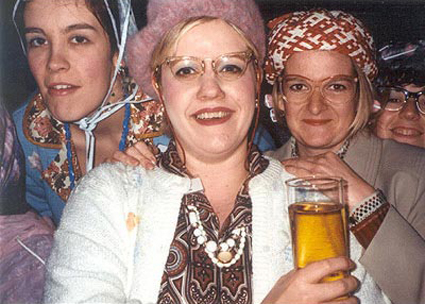
Young Girls dressed as Old Ladies, Blackpool, © 2000
You can see a gallery of more Folk Archive images here and there’s a review in Frieze here.
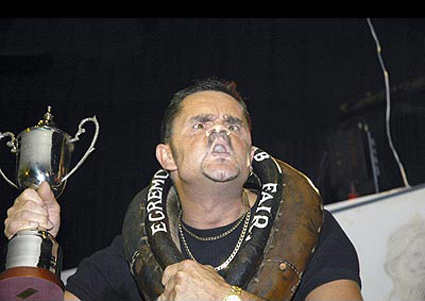
Tommy Mattinson, World Gurning Champion, Egremont, Cumbria © 2004
You can listen to Deller in conversation with Guardian columnist and broadcaster, Jeremy Hardy (2004) here.
And listen to Deller talking at the Royal Society of Arts (2008) here.
Deller’s public event Procession will make its way along Deansgate in central Manchester at 2pm on Sunday 5 July 2009. Commissioned and produced by Manchester International Festival and Cornerhouse.
Start time – 2pm prompt and will last approximately 60 minutes.
Route – Procession will start from the Castlefield end of Deansgate and will end at Manchester Cathedral. Click here to view a map of the route.
Find out more here.
Posted in INSPIRATION, OTHER STUDIES | Comments Off on JEREMY DELLER, THE FOLK ARCHIVE
I’ve just received details of a book launch for Tim Brennan’s English Anxieties, details of which are posted below.
John Hansard Gallery, Southampton, 7 July – 29 August 2009
Private View and Book Launch
Monday 6 July 2009, 6.00-7.30pm
Free / All welcome
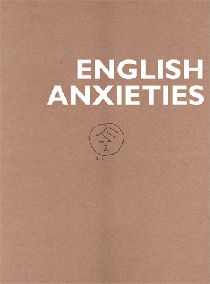
Tim Brennan’s latest work, English Anxieties, is the result of a commission by Photoworks and Ffotogallery, Cardiff, in association with the European Centre for Photographic Research at the University of Wales, Newport about the Mass Observation Archive (MO) at the University of Sussex. For the last year Brennan has sifted through a myriad of archive boxes and folders, consisting of handwritten and typed reports, drawings and printed ephemera, originally gathered to provide some insight into the social worlds that Mass Observation attempted to analyse from its inception in 1937.
You can read more details here.
English Anxieties features an introduction by Russell Roberts and essays by Andrew Biswell and Peter Davidson. It’s priced at £14.99 and can be ordered on 01273 607 523.
Posted in OTHER STUDIES | Comments Off on ENGLISH ANXIETIES
A friend of mine has just emailed me details of a new project called What is England?, which is the brainchild of UK-based photographer and curator Stuart Pilkington. He’s looking for 46 photographers to participate in the project and here’s the notice that he’s posted on his website if you think you might want to get involved-

Pilkington has launched a number of previous collaborative endeavours with photographers, one of which is currently in full swing. The 50 States Project has brought together 50 photographers from across the USA. Each photographer lives in one of the 50 States and every two months during the course of the year each photographer is sent an assignment by e-mail, they then have two months to produce one image in response. The photographs must represent both their style and their State. He’s got some good photographers involved, including Julianna Beasley (New Jersey), Ben Huff (Alaska) and William Greiner (Louisiana).
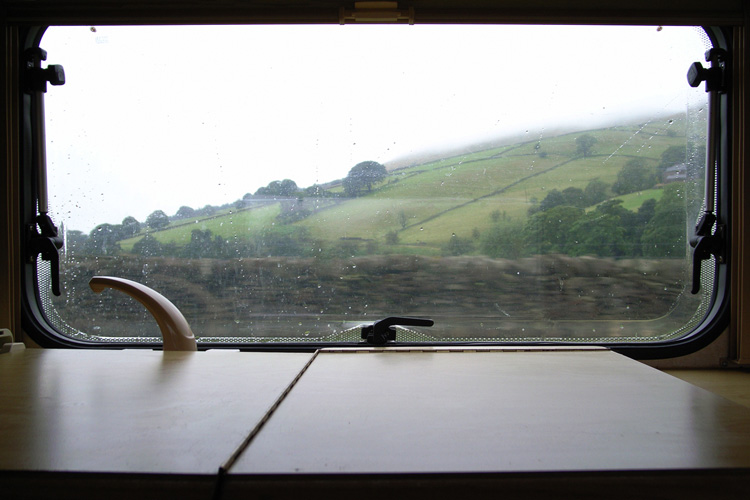
‘Kitchen’ © Poppy Berry, 2008
He also came up with the Alphabet Project, which involved 26 photographers from around the world each of whom had a first name that begins with an unique letter of the alphabet.One of my close friends was involved, Poppy Berry, and I’ve just noticed that one of the photographs she posted for assignment ‘k’ was taken in my Talbot Swift motorhome during the England trip last summer! (Poppy and her husband joined us in the Peak District for a wet weekend break).
Posted in OTHER STUDIES | Comments Off on WHAT IS ENGLAND?
I’ve just come across an intriguing project called Darkvan. It was set up by Dominic de Vere and Sebastian Edge who met while doing an MA at the University for the Creative Arts, Maidstone. They have recreated the Wet Collodion process, the first publicly available photographic process, taking it out of laboratory conditions and onto the road by customising a two-berth Ford Transit van featuring a hermetically sealed darkroom.
The Wet Collodion process is a nineteenth century photographic development created by Englishman Frederick Scott Archer that utilities a silver chloride solution bonded to glass to create a black and white negative after exposure in the camera.
Edge and de Vere traveled around Southern England between August 2008 and April 2009 in the Darkvan along with a self built 20×24 inch plate negative camera, which stands 5 feet high and sits 3 feet wide, taking 18 x 22′ glass plates for Collodion exposure.
Here are a few of their results-
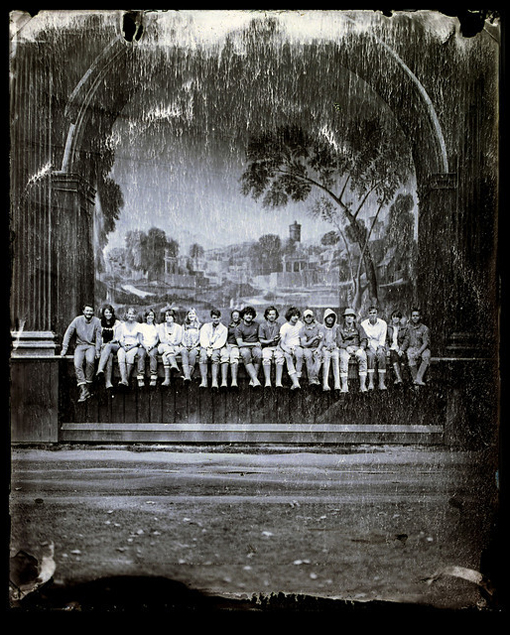
© Dominic de Vere and Sebastian Edge
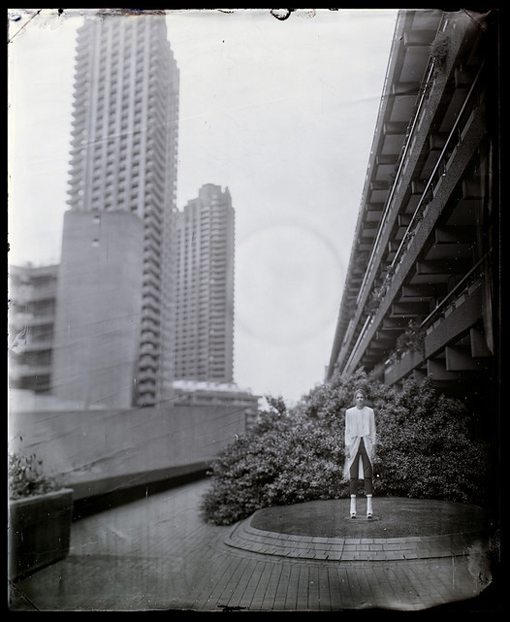
© Dominic de Vere and Sebastian Edge
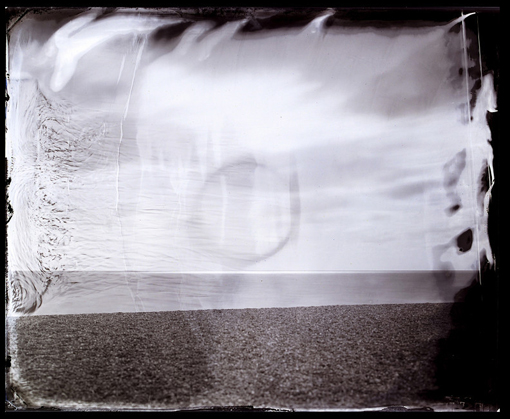
© Dominic de Vere and Sebastian Edge
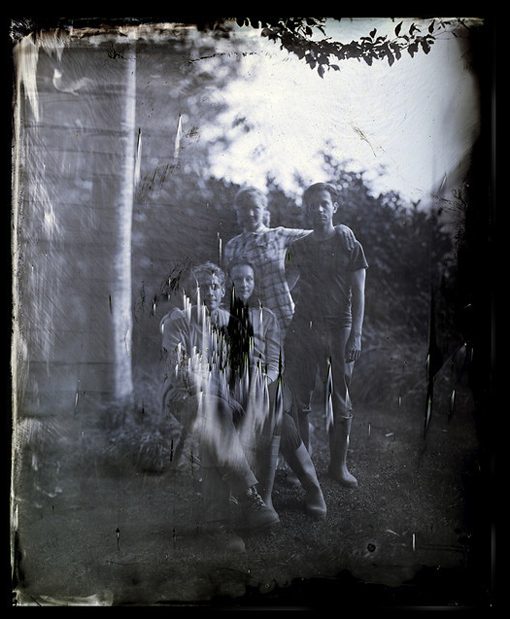
© Dominic de Vere and Sebastian Edge
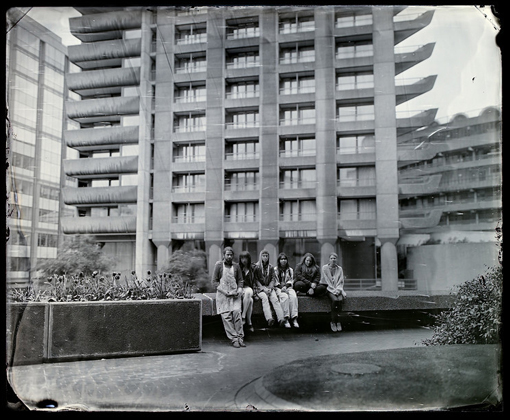
© Dominic de Vere and Sebastian Edge
You can see a wider portfolio of Edge and de Vere’s images here.
You can also watch a video about the Wet Collodion process on the J. Paul Getty website here.
Finally, you can read about the project Surface Stations which formed part of their final show, combining the English weather forecaster, farmer Lester (who is utilised by the Met Office) here. It is a site specific time-lapse work with a mercury cube and Stevenson screens.
Contact Sebastian Edge- sebedge@googlemail.com.
Posted in OTHER STUDIES | Comments Off on THE DARKVAN
Graduation season is upon us once again, when a slew of new photographers will be leaving BA and MA courses from across the country. One such graduate, Andy Greaves, who has recently completed the MA Photography course at De Montfort University in Leicester, was kind enough to get in touch recently with details of his final thesis. Greaves has produced a series of portraits around the theme of English identity.
Here’s a short commentary about his ‘England My England’ project with a selection of photographs.
“After careful consideration I am driven to the conclusion that my ‘English’ identity is deep within me, symbolically at my own front door. That my own identity and that of being English is as much shaped by my own personal history as it is by the Englishness defined by any academic notions of the subject; the country’s aspects of climate, social, political and cultural history. To ignore our own personal history is to ignore not just an essential part of who we are as individuals but what makes us all collectively English. I do not deny that English nationalism exists but it is similarly difficult to deny that the nation state is not constructed by those it best profits: the politicians, the Established order, the monarchy, and the Church. Furthermore that national identity is both multi faceted and continuously shifting. If I sound cynical and ambivalent it is because my own personal experiences, readings and education have ingrained within me this opinion.”

Brian © Andy Greaves, 2008
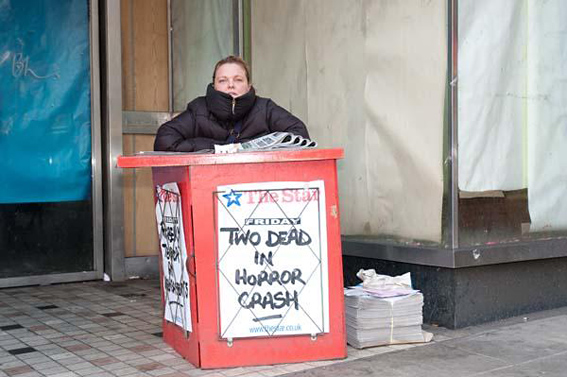
Vendor © Andy Greaves, 2008
“As photographers we are often outsiders looking in and therefore only expected to respond visually to what is in front of us backed up by the necessary research. During this project I have felt the burden of being on the inside looking out, having to consider those aspects of Englishness, the mass of cultural, historical, political baggage that an Englishman would necessarily take for granted and an outsider would be unaware of.”
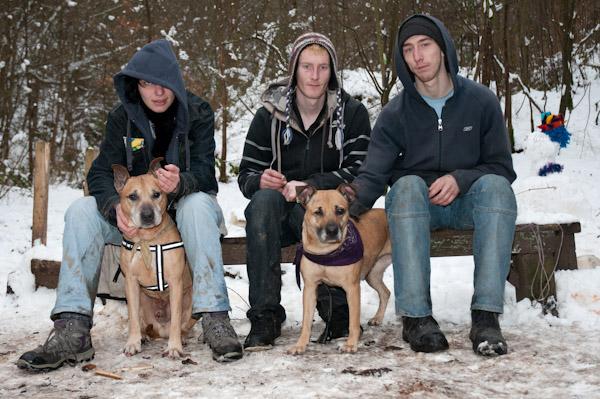
Elizabeth, Alan and Karl © Andy Greaves, 2008
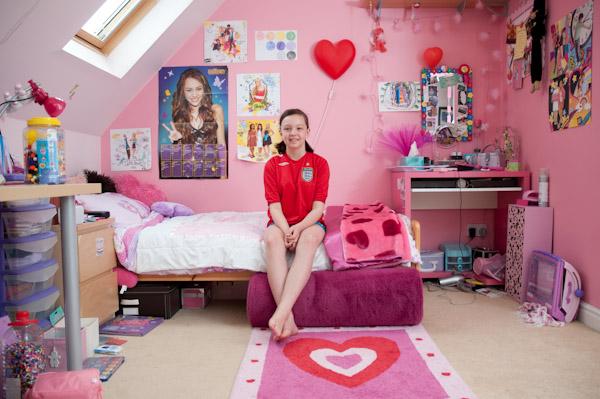
Emily © Andy Greaves, 2008
“My series of images attempt to capture my feelings towards my nationality, a personal reflection of Englishness. Essentially of friends, family and close acquaintances they attempt to show a quintessential Englishness. They are of people who in many ways have shaped and represent my current thinking on Englishness.”
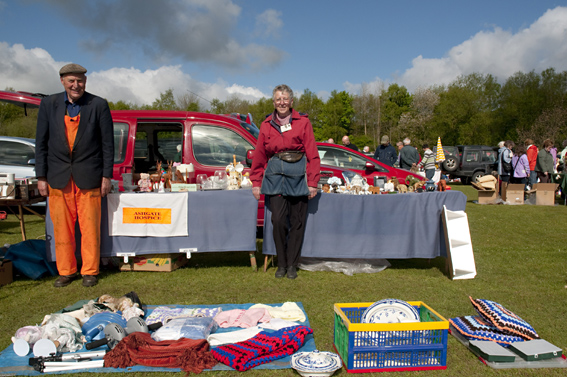
Annie and Andrew © Andy Greaves, 2008
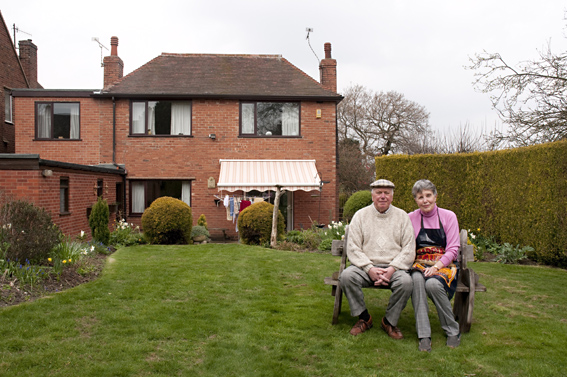
Mum and Dad © Andy Greaves, 2008
You can see the entire series on Greaves’ website here.
Posted in OTHER STUDIES | Comments Off on ENGLAND MY ENGLAND PORTRAITS
As I’ve mentioned a few times on the blog, this is an exciting time for photographers documenting England (and long overdue). One photographer mid-way through a journey around the country is John Angerson, whose pictures I posted up on an earlier blog post here. I emailed Angerson a few questions about his project which he’s been kind enough to answer below.

Newport Inn Public House, Braishfield, Southampton © John Angerson, 2008
Why have you chosen to follow in the footsteps of JB Priestley? What is it about his book that you associate with, instead for example, with H.V.Morton’s ‘In Search of England’ or George Orwell’s The Road To Wigan Pier?
I first read ‘English Journey’ in 1990 and within the first couple of pages I was hooked. I greatly enjoy Priestley’s writing style and as I spent a large portion of my photographic career living and working in his hometown; Bradford, Yorkshire, I feel an affinity with his views and sentiment on England. Priestley was unique in combining a warm humanity with searing social insight. His writings on the people and places he encountered give us perhaps the most vivid and enduring impression of the country at this pivotal period; and the England Priestley discovered in 1933 is both alien and strangely familiar. This year marks the 75th anniversary of the book and it seemed to me to be the right time to undertake a project that references this signifcant literature.
Will you be re-visiting the places Priestley visited? Are you making a continuous journey around England? How are you traveling? (Priestley seemed to take all manner of transportation).
I am following the trail Priestley took in 1933 and have researched each geographical location he covered in his book. I have spread the project over the last year choosing to visit two to three locations in each trip. I have been using the same modes of transport as he did: a combination of train, motorcar and coach.
How would you describe the photographic approach to your work? I notice from your initial photographs that you are bringing together landscapes, portraiture and interiors.
For this project my approach is to produce quiet, contemplative images of England in its urban and rural landscape and its inhabitants – images that will sit comfortably alongside Priestley’s text.
How important an element to the project is portraiture? (In Priestley’s view, rooted in nineteenth-century radicalism, it is ‘the people’ who are the real nation). And how do you decide who you will photograph- random people you come across or do you have a mental list of types of people you’re looking for?
I have been taking photographs in each location in response to what and who I encounter now and what Priestley wrote about in his book then. I am aiming to capture the essence of an English Journey rather than create a modern literal version. I’ve always tried to use an opportunistic approach when shooting my projects. I have spent a great deal of time trying to research and locate contemporary people and places that Priestley would have been interested in talking to and seeing if he were experiencing England in 2009. This has ranged from office workers, Big Brother contestants and mothers of fallen soldiers from the Iraq war. As with many of my other long term projects I am very interested and drawn towards inter-dependent groups within communities. I believe that Priestley’s English Journey overwhelmingly articulated the need for England to remove itself of illusions and that people must depend upon each other and work as individuals towards a common purpose.
There are interesting parallels with Preistley’s work which was produced during an economic slump, and his work was overtly political, appealing for democratic socialist change. You are also producing your series during quite a serious economic downturn, do you considered this important/relevant? Will their be a political stance to your series?
I started this project before the current economic slump, and I have noticed that as I have travelled, more of the images have had an element of the recession; be it subtle or the main image component. It has been said that Priestley’s writing helped shape Beveridge’s 1942 report and the great reforming Labour government of 1945. After the publication of English Journey in 1934 many leading figures in Mass Observation and the documentary movement were influenced by the book and ventured into the English industrial heartlands to record for themselves this included – Ellen Wilkinson, James Hanley and most notably George Orwell in The Road to Wigan pier two years after English Journey in 1937.
Why did you decide to make a transition to 5×4 (and colour) after your last book, ‘Love, Power and Sacrifice’?
Lover Power and Sacrifice was shot over 20 years on a 35mm. For English Journey I felt a change of approach would challenge me as a photographer. Due to it’s cumbersome size and single-shot nature the 5×4 camera forces the user to think harder about subject and composition; helping me to spend more time thinking and creating quiet contemplative photographs. As the images are a modern take on the English Journey book it seemed natural to shoot colour film.
As I’m sure you’re aware, there is a rich history of British photographers documenting their homeland. Whose work in this tradition do you most admire and why?
I greatly admire the work of British photographer Bill Brandt. There is a superb quote by Photographer, Bill Jay, which really sums up his work:
“Bill Brandt was a quiet, withdrawn, priest-like character with the taut skin and bony, elegant features of an aristocratic aesthete. He spoke sparsely and in little more than a whisper. He believed that the camera was a medium through which he received messages from another world. I am just beginning to understand what he meant. Brandt was other-worldly in another sense. Aloof from trends and movements in his own medium, he seemed to know nothing and no one in contemporary photography. He quietly continued his experiments, always thrusting ahead into new directions, confounding expectations and confusing his critics.”
Are you worried about your photographs being derivative of previous photographic studies of England?
Photographs are subjective – documentary photography can only ever be about the photographer’s perceptions of place, time and the people they encounter. As Priestley said, this will be “What one man saw and heard and felt on an English Journey.”
How are you funding the project?
I have been awarded a bursary from the Arts Council England for the project.
What do you see as the finished product?
A traveling exhibition with an accompanying book in 2010
Posted in OTHER STUDIES | Comments Off on JOHN ANGERSON INTERVIEW















